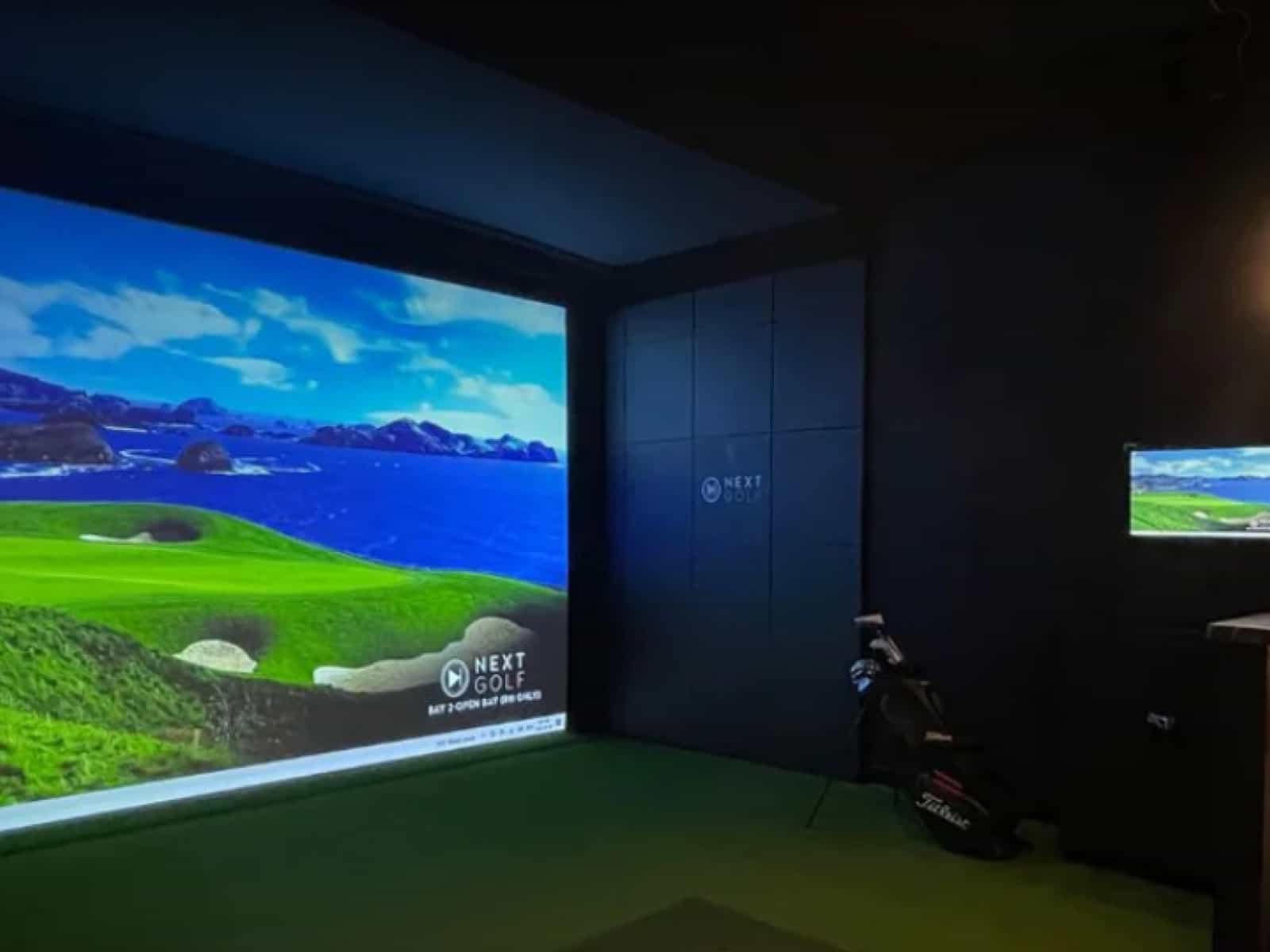Golf simulation technology has come a long way in recent years. Once an ultra-niche product found only in select pro shops and wealthy enthusiasts’ homes, modern golf simulators have become mainstream. Today, simulators are adopted by pros and amateurs alike looking to play virtual rounds, practice their skills, and analyze their performance year-round.
This shift from a prohibitively expensive novelty to a practical and accessible training tool has been facilitated by significant advancements making the simulation experience more immersive, accurate, and affordable.
Still, an open question remains around whether prices will follow the typical declining trajectory of most electronics or if they will remain high due to the sophisticated nature of the simulation.
This article explores the key factors that will shape golf simulator pricing in the years ahead.
If you’re interested in learning more about the current, up-to-date cost of golf simulators, you can find detailed information in our article on how much a golf simulator costs.
On the one hand, continued advancements could drive costs down and make simulators accessible to a wider range of golfers. However, specialized components, high production expenses, and strong branding suggest prices may remain elevated despite technological progress.

Technological Advancements Driving Price Declines
Several key technology trends suggest golf simulators will continue getting cheaper in the years to come. Advancements in tracking sensors, computing power, display technologies, and physics software modeling are bringing costs down across the board.
Improved Tracking and Sensors
One primary driver of more affordable simulators is the improvement in ball and club tracking sensors. Radar, optical, and other tracking methods are rapidly getting more precise while also dropping in price.
For instance, SkyTrak’s newest launch monitor model has improved accuracy and performance over its predecessor, with the combination of Doppler radar and photometric technologies without a massive increase in price. If you compare the price increase to the huge improvements, the newer version provides even more value for the money.
As tracking accuracy goes up and sensor costs decline, overall system prices are pushed downward.
Commoditization of Components
Many components used in golf simulators like high-resolution displays, graphics cards, and computing power have become commoditized. Mass production of these electronics for mainstream consumer markets has driven costs down significantly. Simulator manufacturers can now source these high-performance but inexpensive mainstream components to cut overall build costs.
Software-Based Simulation

Recent software advances are also allowing for realistic simulation without as much dependence on specialized hardware. Software-only mobile apps can leverage improved physics engines and graphics to deliver immersive simulation experiences. The rise of these software-driven products points to the potential for lower-cost simulation in the future.
In summary, tracking sensors, computing power, displays, and software are all rapidly improving while becoming more affordable. This tech innovation is likely to keep pushing simulator prices down over time, even as the simulation accuracy and experience improve.
Market Forces Maintaining Premium Pricing
While technological progress points to declining prices, there are also market factors that may keep golf simulator pricing relatively high and premium. These supply-side considerations around production costs, brand value, and the specialized nature of components could counteract the downward pricing pressure from tech advancements.
Specialized Nature of Components
Certain key components like ball and club tracking systems require significant proprietary R&D. This specialized nature limits commodity-style mass manufacturing, which typically drives prices down. These unique components have high barriers to market entry and replication.
High Production Costs
Creating an accurate and responsive golf simulator requires precision components, quality manufacturing, and rigorous testing. These production expenses including materials, labor, assembly, and QC result in inherently high fixed costs. The sophisticated simulation experience carries premium pricing.
Brand Value of Established Companies

Trusted incumbent brands like TrackMan, Foresight Sports, and FlightScope command strong customer loyalty and perception of quality. This reputation and brand equity allow established players to maintain high price points despite advancing tech.
Impact of New Competition and Technology
While established golf simulator companies enjoy strong branding and advantages that support premium pricing, new competitive forces and alternative technologies could disrupt the market in ways that drive prices down.
Potential for Disruption by New Entrants
Startup companies bringing fresh approaches and technologies to the simulator market pose a threat to the pricing power of incumbents. Recent examples like the Rapsodo MLM2Pro and Garmin Approach R10 launch monitors demonstrate new entrants are able to enter the market at lower price points compared to legacy brands.
If more innovative startups enter the space with cost advantages, it may compel broader downward price adjustments from established names in the industry.
Emerging Technologies Like AR/VR

New simulation approaches using augmented reality, virtual reality, and advanced software also have the potential to challenge traditional golf simulator offerings. These emerging technologies can deliver high-fidelity simulation experiences, potentially at cheaper prices than current solutions. However, uncertainty remains around if and when these technologies will become truly mainstream.
An influx of competition from disruptive startups and alternative simulation technologies could significantly impact the market in ways that make premium pricing difficult for incumbents to sustain long-term. However, the timing and extent of this potential impact is still an open question.
Conclusion
The future price trajectory for golf simulators remains uncertain, with compelling forces pushing both ways. Continued tech improvements point to declining costs, as with most electronics. However, these are offset by complex R&D, production challenges, and brand strengths that support ongoing premium pricing.
New competition like AR/VR also presents a wildcard that could spur industry disruption and price reductions, but the timing and impact are unpredictable.
Overall, it is difficult to forecast confidently whether simulators will follow electronics’ path of declining prices, or remain a niche premium product. The sophisticated simulation technology may justify persistently high pricing.
While the outcome is unclear, monitoring market shifts provides the best sense of where prices are headed when looking to purchase.
Thanks for reading!




